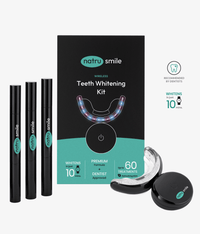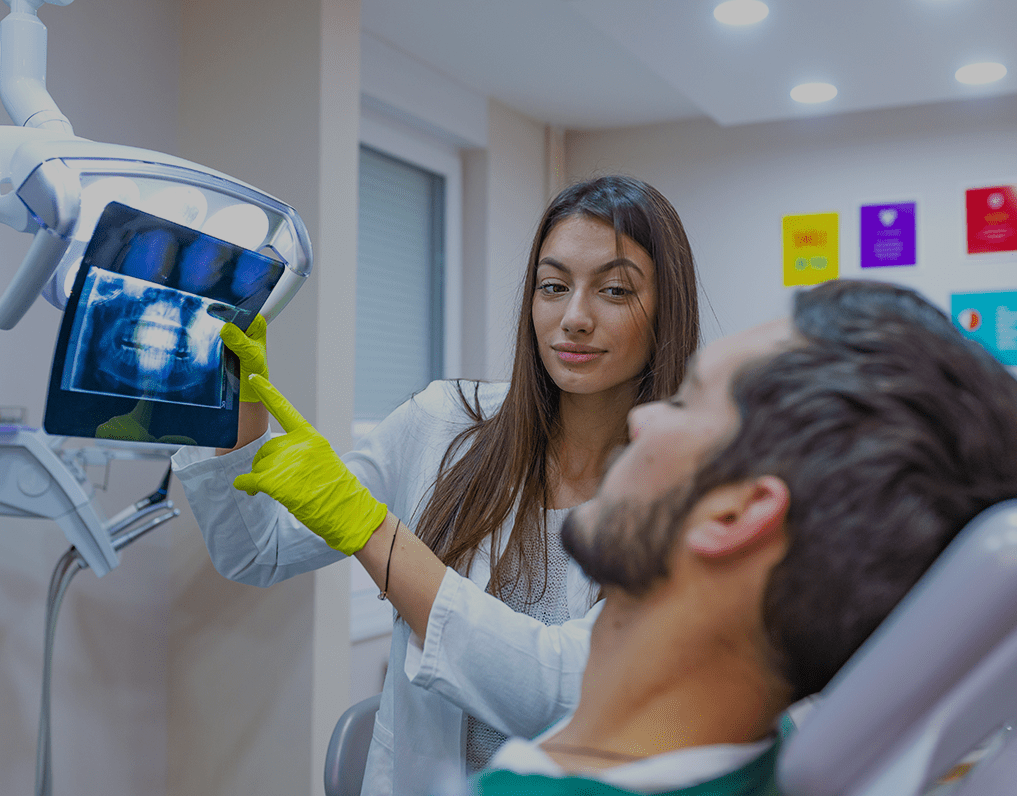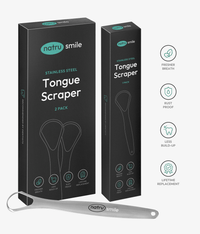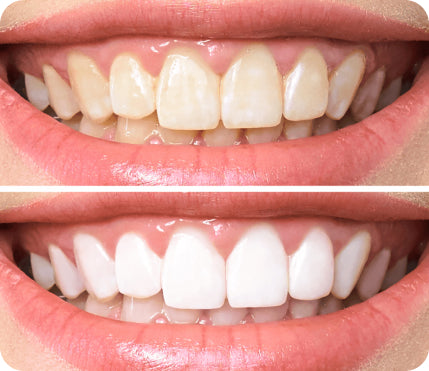
All products are certified by dental expert Dr. Greg Grillo
A routine for appropriate teeth brushing is an indispensable part of good oral health. Unfortunately, many people aren't aware of how to brush their teeth correctly, which can result in cavities, gum disease, and a host of other dental complications.
In this detailed guide for 2023, we’ll not only explain the proper way to brush your teeth but also provide useful tips and expert advice for achieving optimal dental hygiene, ensuring that you can maintain a healthy and bright smile for years to come.
By taking the time to read through our guide, you'll gain valuable insight into the best techniques and practices for brushing your teeth, as well as understand the common mistakes to avoid. Ultimately, our goal is to help you build a strong foundation for your oral health routine, so you can effectively reduce your risk of dental problems.
So, without further ado, let's explore the essential steps you must consider when brushing your teeth!
Essential Dental Cleaning Tools: What Do You Need To Brush Your Teeth?
Before delving into the most effective teeth brushing methods and how to brush your teeth correctly, it's crucial to have a clear understanding of the required tools for optimal dental cleaning. If you use these tools routinely, you can maintain your oral hygiene and prevent the development of black dots or other dental issues. The necessary tools for thorough dental cleaning are as follows:
Toothbrush
Choose a high-quality toothbrush that suits your personal preference - this can be manual or electric. The American Dental Association (ADA) recommends using a toothbrush with soft bristles to avoid causing damage to your tooth enamel and gums. Additionally, ensure that the toothbrush head is an appropriate size and shape to reach all areas of your mouth easily.
Fluoride Toothpaste
Select a toothpaste containing fluoride, which is effective in strengthening tooth enamel and preventing the formation of cavities. Look for toothpaste with the ADA Seal of Acceptance, which guarantees that the product meets specific criteria for safety and effectiveness.
Dental Floss
Flossing is essential for removing plaque and food particles from between your teeth, where a toothbrush cannot reach. Choose a comfortable and easy-to-use dental floss, such as waxed, unwaxed, or flossing tape, that works well for your teeth and gums. Flossing regularly helps to prevent the build-up of plaque that may lead to black dots or other dental problems.
Tongue Scraper (optional)
While not mandatory, tongue cleaning can significantly contribute to maintaining good oral hygiene. Use a tongue scraper or your toothbrush's bristles if no tongue scraper is on hand. Cleaning your tongue can help remove trapped bacteria and debris that may contribute to bad breath and tooth staining.
By assembling and properly utilizing these dental cleaning tools, you're off to a great start in ensuring good oral hygiene and avoiding dental issues like black dots on your teeth.
Proper Techniques To Brush Your Teeth: A Step-By-Step Guide
1. Use A Small Amount Of Toothpaste
Using the right amount of toothpaste is crucial for maintaining optimal oral hygiene. When brushing your teeth, it is essential to apply only a pea-sized amount of fluoride toothpaste to your toothbrush. Using too much toothpaste can generate excessive foam, which can make it challenging to brush your teeth correctly. Additionally, using the right amount of toothpaste helps in conserving your resources, so your toothpaste tube lasts longer.
2. Set Your Bristles At The Gum Line At A 45-Degree Angle
An essential aspect of brushing your teeth is the proper placement of your toothbrush bristles. Position the bristles of your toothbrush at a 45-degree angle against your gums. This specific angle ensures that you are effectively cleaning the gumline, where plaque, bacteria, and food debris tend to accumulate. This angle also aids in massaging your gum tissue gently, promoting its overall health and preventing gum disease.
3. Spend Two To Three Minutes Brushing
One key habit to develop for maintaining good oral hygiene is spending an adequate amount of time brushing your teeth. It is essential to brush your teeth for at least two to three minutes to ensure that all tooth surfaces, including the ones hard to reach, are thoroughly cleaned. Many people spend much less time on this task, leading to inadequate oral hygiene and an increased risk of dental issues such as cavities, gingivitis, and bad breath.
4. Brush Your Molars
Even though your molars may be more difficult to clean due to their location at the back of your mouth, it's crucial to pay close attention to them when brushing. Molars often have deep grooves and fissures that can easily trap food particles and bacteria, leading to decay and gum issues. To effectively brush your molars, use a back-and-forth motion while applying gentle pressure to remove plaque and debris efficiently.
5. Brush The Inner Surfaces Of Your Teeth
It's common for people to focus on the outer surfaces of their teeth while brushing, neglecting the equally important inner surfaces. To clean the inner surfaces of your teeth, tilt your toothbrush vertically and use gentle up-and-down strokes. These careful strokes will help dislodge plaque and bacteria that could otherwise lead to cavities and gum disease if left unchecked.
6. Brush Your Tongue Gently
Many people are unaware that their tongue can harbor a significant number of bacteria, making it essential to clean it as part of your oral hygiene routine. To do so, use a gentle back-to-front scraping motion with a dedicated tongue scraper or the bristles of your toothbrush. Properly cleaning your tongue not only helps remove bacteria and food debris but also significantly contributes to keeping your breath fresh and preventing unpleasant odors.
Brushing Habits To Keep In Mind While Brushing Your Teeth: Top Recommendations
A well-rounded oral healthcare routine is vital to maintaining the health of your teeth and preventing issues such as black dots or cavities. It's crucial to adopt good brushing habits to ensure your teeth stay clean and strong. Here are some guidelines and tips for effective tooth brushing.
Replace Your Toothbrush Regularly To Maintain Effectiveness
Over time, toothbrushes lose their effectiveness due to wear and tear on the bristles. As a general rule, aim to replace your toothbrush every three to four months or sooner if you notice the bristles have become frayed or misshapen. A worn-out toothbrush won't clean your teeth as effectively as a new one, so it's essential to keep up with replacements.
Use Dental Floss For A Thorough Clean
Flossing is an indispensable part of proper teeth brushing - it helps dislodge and remove plaque and debris trapped in hard-to-reach areas between your teeth that a toothbrush simply can't access. To ensure optimal oral hygiene, make sure you floss your teeth at least once a day.
Avoid Overbrushing To Prevent Damage
Applying excessive pressure to your teeth while brushing or brushing for an extended period can lead to damage to your tooth enamel and irritation of your gums. When brushing your teeth, use gentle pressure and aim to brush for approximately two-to-three minutes.
Be Mindful Of When You Brush
Ideally, you should wait at least 30 minutes after eating before brushing your teeth. This is because consuming acidic foods and beverages can temporarily soften your tooth enamel, making it more vulnerable to damage if you were to brush immediately after eating. Give your enamel time to recover before brushing your teeth.
Choose Your Dental Care Equipment With Care
Picking the right toothbrush and toothpaste is essential for optimal oral care. Opt for a toothbrush with soft bristles as they are gentler on your teeth and gums. Look for toothpaste that contains fluoride, as it helps strengthen tooth enamel and prevents cavities. If you prefer to use an electric toothbrush, choose one with a pressure sensor that will alert you if you're applying too much pressure while brushing.
Consistent Brushing: Twice Daily Is The Key
To maintain optimal oral health and prevent dental issues such as black dots, be sure to brush your teeth once in the morning and once before bedtime. This consistent routine helps remove plaque and bacteria, keeping your teeth clean and healthy throughout the day and night.
How To Brush Your Teeth With Braces Or Spacers?
When you brush your teeth with braces, it's crucial to ensure you're cleaning around the spacers and orthodontic bands thoroughly. To accomplish this, utilize an interdental brush or dental floss in conjunction with a floss threader to easily move around these dental appliances, guaranteeing all surfaces are free from plaque and debris.
How To Brush Your Teeth After Wisdom Teeth Removal?
After having your wisdom teeth removed, it's essential to follow your dentist's specific post-operative care instructions, which may include using a gentle, non-alcoholic mouthwash and being careful when brushing around the extraction site. By taking precautions when brushing, you can prevent irritation, swelling, and possible infection in the affected area.
How To Brush Your Children’s Teeth?
Brushing your child's teeth correctly is an essential part of ensuring their proper dental health. Choose a toothbrush with soft bristles and a pea-sized amount of toothpaste to clean your child's teeth gently. Be sure to guide them through the correct teeth brushing techniques, including circular movements and reaching all surfaces of their teeth.
How To Brush Your Teeth Without Toothpaste?
Although brushing without toothpaste is not the ideal solution, there are alternatives to consider if you are caught in a situation where toothpaste is unavailable. Some of these options include:
Coconut Oil
Swishing coconut oil around in your mouth for a few minutes can help minimize the presence of bacteria and improve your breath's freshness. It contains lauric acid, known for its antimicrobial properties.
Activated Charcoal
Activated charcoal possesses strong absorption properties, making it ideal for removing toxins and stains from teeth, contributing to a whiter smile. However, be sure to rinse comprehensively afterward to remove any traces of charcoal residue.
Baking Soda
Baking soda works well to neutralize harmful acids in the mouth, as well as eradicate surface stains on teeth. Create a paste-like consistency by mixing baking soda with a small amount of water, and brush your teeth as you typically would.
It's important to note that these alternative options should only be used temporarily, and you should return to using fluoride toothpaste as soon as it is available to ensure optimal dental health.
Achieving A Brighter Smile: At-Home Teeth Whitening Products And Best Oral Care Practices
Everyone desires a bright, radiant smile, and at-home teeth whitening products can certainly assist in improving the appearance of your teeth. However, it's crucial to prioritize your oral health before embarking on a teeth whitening journey. To attain the best results, it's essential to follow proper teeth brushing techniques, explore natural teeth whitening remedies like baking soda, and schedule regular dental check-ups. By incorporating these practices into your routine, you can greatly enhance your smile and overall oral health.
Proper Teeth Brushing Techniques
To maintain good oral hygiene and make the most of teeth whitening products, it's important to adopt effective teeth brushing habits. Here are some recommended techniques to help you get started:
- Brush at least twice a day: Brushing your teeth in the morning and before bedtime can help remove plaque and bacteria buildup, reducing the likelihood of tooth decay and gum disease.
- Use a soft-bristled toothbrush: A soft-bristled toothbrush is gentle on your teeth and gums, preventing damage or abrasion.
- Brush for two minutes: Spend at least two minutes brushing your teeth to properly clean all surfaces and remove plaque.
- Use fluoride toothpaste: Fluoride toothpaste helps to strengthen enamel, providing an additional layer of protection against tooth decay.
- Replace your toothbrush every three months: A worn-down toothbrush doesn't effectively remove plaque, so be sure to replace your toothbrush regularly.
Natural Teeth Whitening Remedies: Baking Soda
In addition to following proper teeth brushing techniques, you can try natural teeth whitening remedies to enhance the results of at-home whitening products. One such remedy is using baking soda to help remove surface stains from your teeth. Keep in mind that while baking soda can provide some whitening benefits, it shouldn't replace your regular toothpaste as it lacks a sufficient amount of fluoride.
To use baking soda for teeth whitening:
- Mix a small amount of baking soda with water to create a paste-like consistency.
- Apply this mixture to your toothbrush and brush your teeth as you normally would.
- Rinse thoroughly with water afterward.
Remember, be cautious not to use baking soda more than two times a week as it can be abrasive and may wear down tooth enamel over time.
Regular Dental Check-Ups
Lastly, make sure to schedule regular dental check-ups with your dentist, ideally every six months. Routine dental examinations and professional cleanings are essential for maintaining optimal oral health, and your dentist can provide personalized recommendations to ensure your teeth whitening efforts are effective and safe.
In conclusion, while at-home teeth whitening products can help improve your smile, it's equally vital to prioritize your oral health by following proper teeth brushing techniques, using natural whitening remedies like baking soda in moderation, and visiting your dentist routinely. By incorporating these best practices into your dental care routine, you'll be on your way toward achieving a brighter, healthier smile.
Numerous Teeth Whitening Options: Comparisons And Recommendations
In the contemporary world of modern dentistry, there exists a wide array of teeth whitening options that cater to different needs and budgets. Among these options, you can find various over-the-counter (OTC) products and professional treatments. Notable examples include:
Whitening Strips And Gels
Whitening strips and gels are readily available and can be applied at home. They usually contain hydrogen peroxide, a bleaching agent that helps break stains down, thereby revealing a brighter tooth enamel. Typically, teeth whitening strips are worn for 30 minutes a day over a two-week period. Gels, on the other hand, are applied using a toothbrush or a mouth tray and also require consistent usage to achieve the desired effect.
Proper Dental Care: Maintaining A Good Oral Hygiene Routine
Of course, nothing can replace proper dental care when ensuring the longevity of tooth health and appearance. Establishing a solid oral hygiene routine should include:
- Brushing your teeth at least twice a day
- Flossing daily
- Using mouthwash to maintain healthy gum tissue and reduce plaque buildup
Specialized Toothbrushes And Techniques For Teeth With Braces
Brushing your teeth with braces can indeed pose significant challenges; however, there are several tools and techniques that can make the process easier and more effective. To maintain proper hygiene while wearing braces, consider the following:
- Investing in specialized toothbrushes, such as a soft-bristle electric toothbrush or a toothbrush with smaller or V-shaped bristles designed to clean around brackets and wires
- Utilizing interdental brushes to help clean between the braces and remove trapped food particles that can lead to plaque buildup
- Implementing a floss threader or water pick to assist in flossing with precision around brackets and wires
By incorporating these recommendations into your dental routine, you'll be well-equipped to maintain healthy teeth and gums, even with braces.
Choosing The Right Toothbrush: Importance, Types, And Best Practices
Picking the right toothbrush is an essential aspect of maintaining good oral health. Selecting the best toothbrush for your dental needs can be a bit overwhelming, given the plethora of options available on the market. Don't be afraid to experiment with different types of toothbrushes until you find the one that feels comfortable and effective for your personal use. Additionally, it's crucial to follow any recommendations or instructions from your dentist regarding when to brush your teeth after a tooth extraction, and which specific toothbrush is best suited for your needs, such as a post-surgical toothbrush.
The ongoing debate between manual and electric toothbrushes often leaves people wondering which one to choose. Ultimately, what matters most is that you're employing the proper teeth brushing techniques and using a toothbrush that's suitable for your dental health. If you opt to use an electric toothbrush, ensure that it's equipped with features that promote efficient and gentle cleaning, such as a pressure sensor and soft bristles. It's also important to replace the brush head on your electric toothbrush regularly to maintain its effectiveness.
To help you on your toothbrush selection journey and provide you with the information to make informed choices, we've outlined a few essential aspects that should be considered when choosing a toothbrush for optimal dental hygiene.
Types Of Toothbrushes
There are several types of toothbrushes available on the market, including manual toothbrushes, electric toothbrushes, and specialized toothbrushes designed for use after surgical procedures or for individuals with specific dental needs. Here's a quick breakdown to help guide you when choosing your toothbrush:
- Manual Toothbrush: The traditional option, manual toothbrushes come in various styles, sizes, and bristle types, allowing you to select the one you find most comfortable and effective for your teeth and gum health.
- Electric Toothbrush: These toothbrushes use powered brushing mechanisms to provide a more thorough cleaning. They often come with built-in features such as pressure sensors, timers, and multiple cleaning modes to cater to individual preferences and dental requirements.
- Specialized Toothbrushes: These toothbrushes are designed for people with specific dental conditions or needs, such as post-surgical toothbrushes, interdental brushes, and orthodontic toothbrushes.
Best Practices for Toothbrush Care And Maintenance
- No matter which toothbrush you choose, proper care and maintenance are crucial to ensure its longevity and effectiveness. Here are some best practices for maintaining your toothbrush:
- Make sure to replace your toothbrush or brush head (for electric toothbrushes) every three months or sooner if the bristles become frayed.
- After brushing, rinse your toothbrush thoroughly to remove any leftover toothpaste or debris.
- Store your toothbrush upright in a well-ventilated area to allow for proper drying and to minimize bacterial growth.
- By following the guidelines and tips outlined in this article, you can be confident that you're equipped with the knowledge of how to select the most suitable toothbrush, the correct way to brush your teeth, and the maintenance of excellent oral health.
Wrap-Up: Brushing Your Teeth 101
While brushing your teeth looks simple (at first glance), there’s more to proper brushing technique than meets the eye. From the type and size of brush to the duration and frequency of brushing, good - and bad - brushing habits add up over the years.
To ensure your pearly whites remain healthy, it’s important to brush your teeth properly and with good form. Work your toothbrush bristles in circular motions, making sure to reach every surface of each tooth.
Don’t forget to brush your tongue and the roof of your mouth too! Tongue scrapers, fluoride toothpaste, and dental floss can make keeping on top of your oral health easy.
Lastly, remember to replace your brush every three to six months (or when the bristles start to look worn). With the right technique, tools, and frequency, you can keep your smile beautiful for years to come.












